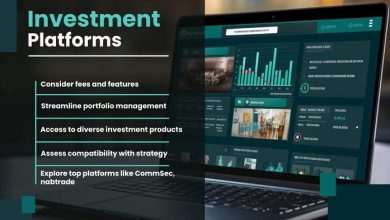
Effective stakeholder assessment and prioritization are crucial for project success. According to the Project Management Institute’s 2023 Pulse of the Profession report, organizations that frequently use standardized stakeholder engagement practices are more likely to meet their original goals and business intent.
As such, it is vitally important that organizations identify and engage key stakeholders—those with significant potential risks and benefits—in order to develop robust stakeholder strategies that align with corporate goals as well as adapt to external business environments.
By carefully selecting, engaging, analyzing, and engaging key stakeholder groups early enough in projects, organizations can better align project objectives with stakeholder expectations, improving the chances of positive results and forging lasting trust with them. Implementing processes early helps streamline decision-making, mitigate risks more easily, and foster lasting trust relationships among stakeholders.

Understanding Stakeholder Roles and Interests
Identification of stakeholders involves recognizing all those affected or with an influence over a project, from internal personnel like employees and managers to external groups like customers, suppliers and regulators. Understanding each stakeholder’s interests and motivations to effectively meet their needs while preventing conflicts within a project is paramount in meeting objectives efficiently while mitigating conflicts that might otherwise arise during the execution.
Precise knowledge of all of its constituents helps align project strategies with expectations as well as the execution of enhanced project goals. Managing priorities efficiently facilitates communication as well as participatory decision-making at key stages in its lifecycle.
Stakeholder Mapping: Visualizing Influence and Interest
Stakeholder mapping serves to illustrate the influence and interests of stakeholders relative to a project. By focusing on key stakeholders—those who hold the greatest influence or are most directly impacted—organizations can ensure that efforts and resources are directed where they’ll make the most impact.
Using an influence-interest matrix helps categorize stakeholders based on their level of interest and influence on project outcomes. This approach not only aids in targeting communications effectively but also allows for deeper engagement with those critical to the project’s success.
Identifying key stakeholders early and understanding their potential influence and interest helps in anticipating challenges, aligning project goals with their expectations, and customizing engagement strategies. Visual mapping tools can reveal underlying connections between stakeholders, enabling the project team to proactively address areas where stakeholder interests intersect or diverge, ultimately strengthening alignment and project outcomes.
Conducting Stakeholder Analysis: Techniques and Tools
Stakeholder analysis requires systematic information collection and assessment to better understand stakeholder perspectives. Employing techniques like SWOT and PESTLE analyses sheds light on stakeholders’ positions and their possible impacts. These analyses help highlight opportunities for collaboration and potential areas for conflict resolution.
Visualization tools, such as power grids or influence maps, enhance understanding of stakeholder relationships and their levels of influence, supporting more strategic engagement decisions. These methods provide a comprehensive view of stakeholder dynamics, enabling adaptable strategy formulation in response to evolving conditions. These analytical processes also help forecast how changes in the external environment could shift stakeholder influence, necessitating adjustments in engagement strategies.
Assessing Stakeholder Influence and Impact
Determining stakeholder influence involves assessing their ability to impact project results while evaluating their impact and considering how the project affects them. Understanding both dimensions helps in creating a balanced approach that serves both project and stakeholder interests effectively.
Utilizing surveys and interviews gathers crucial insights into stakeholder views and concerns. This evaluation is vital for recognizing less visible stakeholders who might influence indirectly through their networks. Such assessments ensure that all significant inputs are considered in project alignments.
Prioritizing Stakeholders: Balancing Influence and Urgency
Stakeholder prioritization involves weighing their influence, interests, and the immediacy of their needs using models like the Salience Model, which classifies stakeholders based on power, legitimacy, and urgency. This evaluation is essential for managing resources and ensuring that urgent stakeholder concerns are addressed promptly, which can significantly affect project success.
This method identifies key stakeholders requiring immediate focus or less intensive engagement based on their attributes. Effective prioritization allows for optimal resource allocation and focused effort where it is most critical, facilitating efficient and impactful engagement.
Creating a Stakeholder Engagement Plan
Developing a stakeholder engagement plan involves crafting communication strategies tailored to different stakeholder groups. This plan specifies the frequency and methods of communication aligned with stakeholder preferences and project contexts.
It is essential to ensure that all stakeholder groups feel engaged and valued throughout the project lifecycle. The plan should include feedback mechanisms to foster a cooperative environment and adapt to varying engagement needs throughout the project phases. Such flexibility enhances relationships and ensures sustained stakeholder support.
Additionally, periodic reviews of the engagement plan can ensure its effectiveness and relevance as the project progresses, allowing for timely updates in response to feedback or changing project conditions.
Conclusion
Effectively assessing and prioritizing stakeholders are key to project management success. Through understanding stakeholder roles, employing mapping techniques, conducting detailed analyses, and crafting tailored engagement plans, organizations can align project aims with stakeholder expectations. This strategic approach not only improves the chances of achieving project goals but also supports strong relationships, risk mitigation, and long-term success, distinguishing well-managed projects from those that encounter continuous challenges.




